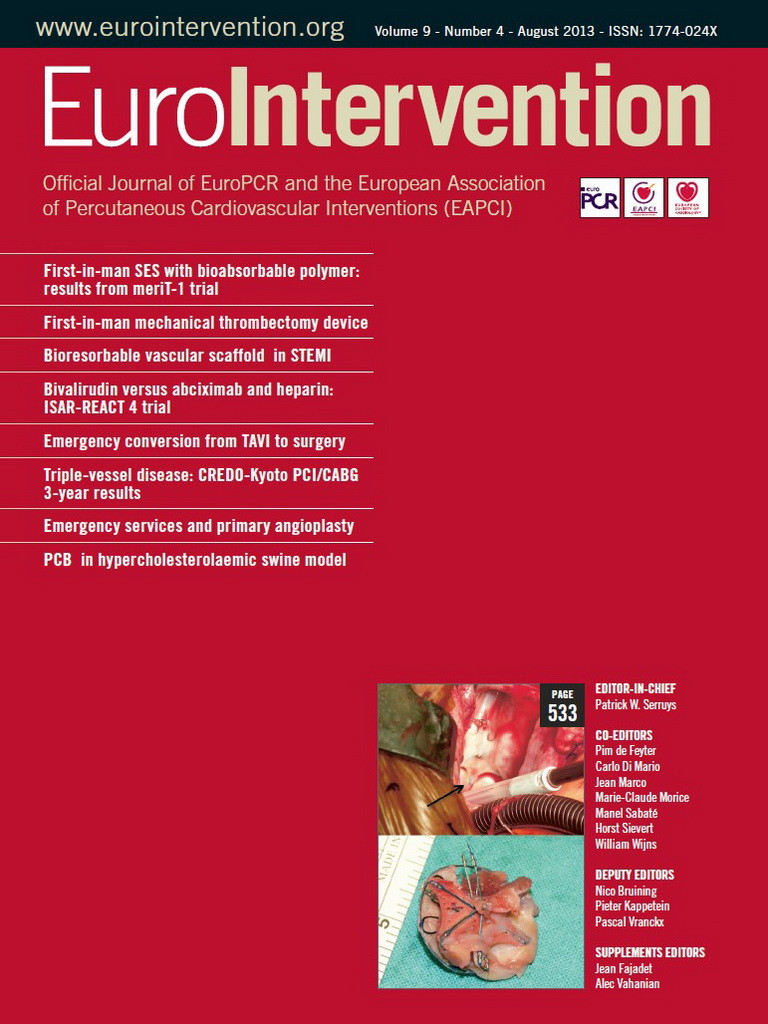Several articles in this month’s edition of EuroIntervention focus on the role of primary PCI for the management of patients with ST-elevation myocardial infarction (STEMI). In one of these, Kristina G. Laut et al studied the use of primary PCI in 120 different European regions distributed across 10 countries –Austria, Belgium, Denmark, England and Wales, Germany, Italy, Portugal, Spain, Sweden and Northern Ireland– and while demonstrating a “significant” rise in the use of primary PCI between the years 2003 to 2008, the positive findings are mitigated by the “great variation within country regions”. While these differences can be ascribed to a variety of “demographic and supply factors”, in the words of the authors they “reveal substantial opportunities to improve primary PCI utilisation across Europe at national and regional levels.”1
Already in 2010, a key paper by Petr Widimisky et al2 pointed to the large variation across Europe in the management of STEMI patients with, again, huge differences in the rate of primary PCI. Rapid reperfusion, essential in improving response for individuals with STEMI, has been incorporated into European and international guidelines, but the actual ability of regions and countries to implement these strategies are often complex. This was a central concern at the creation of the Stent for Life Initiative (SFL). The mission of SFL is to improve the delivery of care and patient access to the life saving indications of primary PCI, thereby reducing mortality and morbidity in patients suffering from acute coronary syndromes. Despite a positive evolution, disparities among European countries continue to exist, pointing to the ongoing need for an immense amount of work in both education and lobbying. Today, besides articles such as the ones in this issue of EuroIntervention, on Tuesday, September 3, 2013 at the upcoming European Society of Cardiology annual meeting, an important abstract will be presented during the ESC Hotline rapid fire session on “Registries on prevention and treatment” by Steen Dalby Kristensen on behalf of the survey investigators on “Reperfusion therapy for ST-elevation acute myocardial infarction 2010/2011: current status in 37 ESC countries”.
How can the EAPCI help in responding to these disparities?
The collaboration of the EAPCI, the Acute Cardiovascular Care Association and EuroPCR with its educational and pedagogic resources provides us with a unique set of logistical and clinical experience to promote the objectives of Stent for Life, encouraging the “implementation of local” STEMI treatment guidelines, identifying “specific barriers” to their being put in place and, in general, improving the delivery of primary PCI to STEMI patients in Europe.
This work has been implemented progressively, with currently 17 SFL members and affiliates working together towards the positive results we see at the present time. The widespread publication of these results and experiences –including the observed variability in the delivery of primary PCI for STEMI patients in certain European regions– allows us to increase the visibility of our project on national and international levels and further encourage improvements and discussion. The EAPCI provides an excellent platform for these discussions through the organisation of an annual SFL Forum, where national societies and working groups are invited to share their experience, report their results and find ways to improve the management and care of their patients. The EAPCI promotes the acceptance of established guidelines, but not necessarily a uniformity in practice. It rather advocates working towards the goal of a common level in the quality of care for all patients in all regions, allowing them to reach the highest levels now possible. We have recently seen in the EAPCI focus article on National Societies and Working groups in the July edition of EuroIntervention, that for some of these national societies –in this case Croatia– participation in the EAPCI acts as a “powerful argument” in their favour in front of local health authorities and governments, helping them in their role of seeking improvements in their healthcare environment on a national and local level.
By supporting these important papers which demonstrate the results of the implementation of international guidelines, the EAPCI and the Stent for Life Initiative continues to work towards reducing differences in the quality of care throughout Europe. This remains a delicate process, where we need to acknowledge existing local barriers. There is still a lot of work to be done, and the involvement of the different countries at a national and regional level is crucial. We must pursue our efforts, which until now have given very good results, continuing to increase the quality of care for our patients. It is the role of international organisations such as the EAPCI –through education and the promotion of the best strategies for the treatment of STEMI as well as improving clinical practice and sharing experience– to ensure that the highest standards of care are available.

